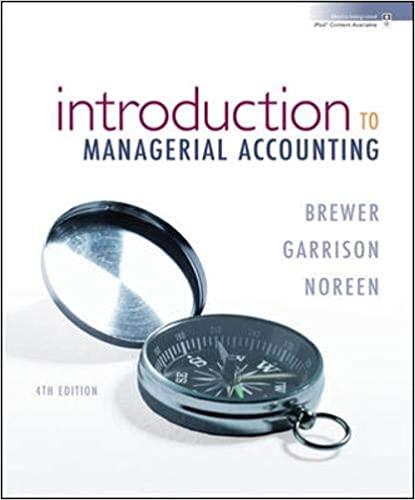Answered step by step
Verified Expert Solution
Question
1 Approved Answer
1. Trade receivables are classified as current assets if reasonably expected to be collected a. Within one year. b. Within the normal operating cycle. c.



1. Trade receivables are classified as current assets if reasonably expected to be collected a. Within one year. b. Within the normal operating cycle. c. Within one year or within the operating cycle, whichever is shorter. d. Within one year or within the operating cycle, whichever is longer. 2. Nontrade receivables are classified as current assets only if reasonably expected to be realized in cash a. Within one year or within the operating cycle, whichever is shorter. b. Within one year or within the operating cycle, whichever is longer. c. Within the normal operating cycle. d. Within one year, the length of the operating cycle notwithstanding 3. Credit balances in accounts receivable are classified as a. Current liabilities b. Part of accounts payable c. Long term liabilities d. Deduction from accounts receivable 4. Which of the following does not change the balance in accounts receivable? a. Return on credit sales b. Collection from customers c. Bad debt expense adjusting entry d. Writeoff 5. Which is recorded by a credit to accounts receivable? a. Sale of inventory on account b. Estimating the allowance for doubtful accounts c. Estimating annual sales returns d. Writeoff of accounts receivable 6. Which accounting principle primarily supports the use of 7. Why is the allowance method preferred over the direct writeoff method of accounting for bad debts? allowance for doubtful accounts? a. Continuity principle b. Full disclosure principle c. Matching principle d. Conservatism a. Allowance method is used for tax purposes b. Estimates are used c. Determining worthless accounts under direct writeoff method is difficult to do d. Improved matching of bad debt expense with revenue 8. The entry debiting accounts receivable and crediting allowance for doubtful accounts would be made when a. A customer pays an account balance. b. A customer defaults on the account. c. A previously defaulted customer pays the balance. d. Estimated uncollectible accounts are too low. 9. In recording cash discounts related to accounts receivable, which is more theoretically correct? a. Net method b. Gross method c. Allowance method d. All three methods are theoretically correct 10. All of the following are problems associated with the measurement of accounts receivable, except a. Uncollectible accounts b. Returns c. Cash discounts under the net method d. Allowance granted 1. Which method of recording bad debt loss is consistent with accrual accounting? a. Allowance method b. Direct' writeoff method Percent of sales method d. Percent of accounts receivable method C. 2. When the allowance method is used, the entry to record the writeoff of a specific account would a. Decrease both accounts receivable and the allowance b. Decrease accounts receivable and increase allowance c. Increase both accounts receivable and the allowance d. Increase accounts receivable and decrease the allowance 3. Under the allowance method, the journal entry to record the writeoff of a specific uncollectible account a. Affects neither net income nor working capital b. Affects neither net income nor accounts receivable c. Decreases both net income and working capital d. Decreases both net income and accounts receivable 4. Under the allowance method, the entries at the time of collection of an account previously written off would a. Decrease the allowance for doubtful accounts b. Increase net income c. Have no effect on the allowance for doubtful accounts d. Have no effect on net income 5. Collection of accounts receivable previously written off results in an increase in cash and an increase in a. Accounts receivable b. Allowance for doubtful accounte c. Bad debt expense d. Retained earnings
Step by Step Solution
There are 3 Steps involved in it
Step: 1

Get Instant Access to Expert-Tailored Solutions
See step-by-step solutions with expert insights and AI powered tools for academic success
Step: 2

Step: 3

Ace Your Homework with AI
Get the answers you need in no time with our AI-driven, step-by-step assistance
Get Started


